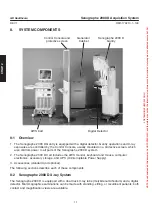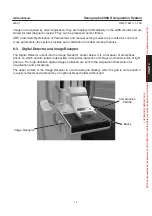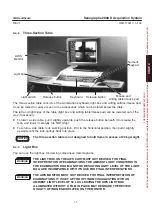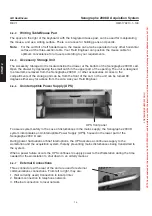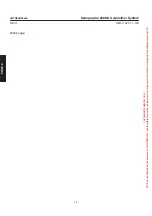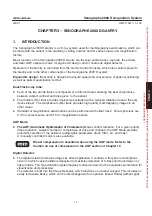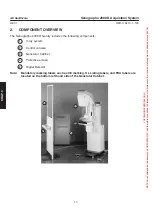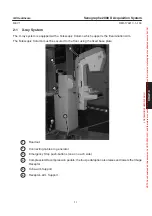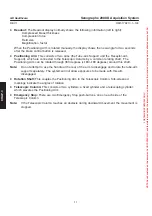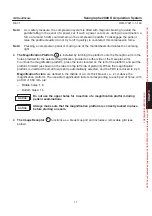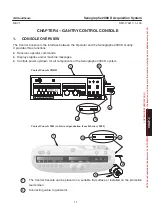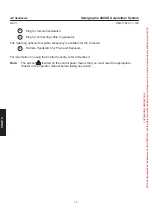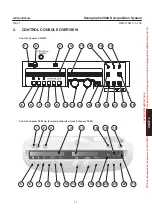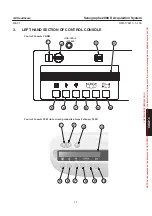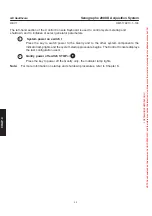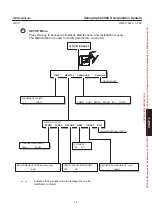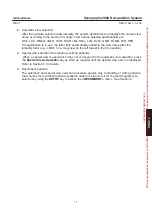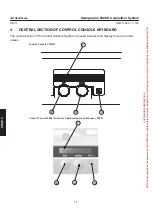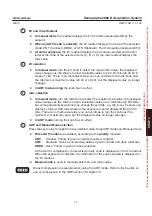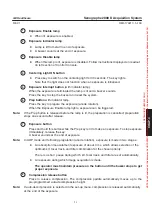
CHAP
. 3
GE Healthcare
Senographe 2000 D Acquisition System
REV 1
OM 5179217–1–100
36
2-1-3
Image Receptor
The Image Receptor contains the Digital Detector and associated components for image acquisition.
Its upper surface supports the breast during examinations and is removeable. Two interchangeable
units are available, one with grid (the Bucky), and one without (the optional Breast Holder). Note that
exposures cannot be made with the Bucky and the Magnification Platform both present. It is possible,
but not recommended, to make exposures with the Breast Holder and the Magnification Platform both
present.
Never make an examination without either the Bucky or the Breast Holder or the
Magnification Platform fitted; the unprotected edge of the Digital Detector may
damage sensitive skin when compression is applied.
"
!
#
D
The
Bucky
or the optional
Breast Holder
#
slides into the top of the Image Receptor:
Removal:
Turn the two release catch levers
"
towards you to release the Bucky or breast
holder, then pull it out.
Insertion:
Insert the Bucky or optional breast holder in the rails, then push it in until you hear a
click.
D
Up/Down Control Buttons
!
are located at the top and bottom of each handrail. Use these
buttons to adjust the height of the Image Receptor by raising or lowering the Receptor-Support
Arm. A protecting rim prevents patient access to the buttons. The height of the Image Receptor
can also be adjusted by footswitches if the four-pedal option is present.
The height of the Image Receptor is adjustable between 761 mm (30 inches) and 1451 mm
(57 inches); it can be rotated
through 360
°
(+180
°
to -180
°
).
D
The levers
which are used on the other Senographe systems to alter SID are not operational.
The SID on Senographe 2000 D systems cannot be changed.
Surfaces which contact the breast (e.g., Bucky, Breast Holder, and compression
paddles) must always be kept clean; see Chapter 13.
CAUTION
CAUTION
FOR
TRAINING
PURPOSES
ONLY!
NOTE:
Once
downloaded,
this
document
is
UNCONTROLLED,
and
therefore
may
not
be
the
latest
revision.
Always
confirm
revision
status
against
a
validated
source
(ie
CDL).

